#BMW engine reliability
Explore tagged Tumblr posts
Link
Audi vs BMW engines—who wins the battle of performance, reliability, and engineering? Dive into a detailed comparison of two German powerhouses....
#Audi Hub#Are Audi engines better than BMW#Audi engine performance#Audi Engine Technology#Audi Engineering Quality#Audi TFSI vs BMW TwinPower#Audi vs BMW engine comparison#Audi vs BMW fuel economy#Audi vs BMW horsepower#Audi vs BMW powertrain#Audi vs BMW specs#best German car engines#BMW engine reliability#BMW turbo engines#engine durability comparison#German engine comparison
0 notes
Text
Enhance Reliability: BMW B58 PCV Diaphragm Cap Replacement Kit

Replace your BMW B58 PCV Diaphragm cap with our kit, including all necessary hardware. Over time, the rubber seal can crack, leading to engine issues. This kit also includes a replacement plastic end cap for added convenience. Ensure your engine's reliability and performance.
0 notes
Text

Breathe New Life into Your BMW 525d: Reliable & Affordable Engine Replacements
#Rebuilt BMW 525d Engine#Reliable BMW 525d Engines#BMW 525d Reconditioned Engines#Used BMW 525d Engines for Sale
0 notes
Text

Low-Mileage BMW X6 Replacement Engines: Extend Your Vehicle's Lifespan
#BMW X6 Replacement Engines#Reconditioned BMW X6 Engine#Rebuilt BMW X6 Engine#Reliable BMW X6 Engines for Sale#Refurbished BMW X6 Engines
0 notes
Text
BARBARA ROBERTS ★ DTN SERIES
series’ masterlist


An old chapter is reopened, that force and distinction that drove Barbara Roberts to the top of F1 for two consecutive years, back home. Malibu Racing is a new temple, the extension of a legacy.
Barbara Roberts, Team Principal and CEO of Malibu Racing F1 Team has her origins tied to history books. A two-time world champion whose on-track abilities couldn’t be ignored. A fierce competitor who came back for more.
At the young age of four, Barbara began chasing the excitement behind the wheel, observing karting races closely, going home, and developing her talent with each lap of her uncle’s old kart. She found happiness in speed, enjoyed visiting the Phoenix Street Circuit each year, obsessed over the Indy500, and watched Ayrton Senna and Alain Prost challenge each other throughout the years. Suddenly, she began to dream about a hot-pink car, all her notebooks filled with drawings of it. She, as well as her family, then understood that racing was a fire that needed to be fueled.
Roberts made her kart racing debut at the age of eight, and after winning her first race, it was a matter of time before her name was engraved on several US-based kart championship trophies. However, further progress would require expanding horizons, which prompted the Roberts to move across the ocean in 1994, supporting Barbara for what could be a challenging career.
Europe was fast, she stayed faster. By fourteen her collection of kart titles included national, international, and world championships. Every race and practice aimed for that unattainable perfection, being aware of the judging eyes on each step she took. At 16 years old, Roberts was fearless, deciding to pursue another dream of hers, an engineering career. She used to say that the pressure was a reminder of what was yet to come.
Pieces began to fall into place, Barbara embarked on single-seaters as soon as age allowed it. Her first title in Monoposto Racing Club was followed by titles in Formula BMW ADAC, Formula Renault, and the Formula 3 Euro Series — all consecutive titles. And bound to keep the momentum, she started hunting for a seat in Formula One, closing the deal with BMW Williams in a reserve capacity for 2004 and securing a race seat for the 2005 season.
Debuting at 21, Barbara spent her year fighting at the midfield in struggling machinery, yet was able to finish 10th in the World Championship, once again pouring ink on paper for what would be BMW Sauber in 2006. An improvement in reliability for her sophomore season placed Roberts on track for her maiden Grand Prix victory in the streets of Monaco, an unbelievable, emotional, and well-remembered drive that holds her in the tracks’ spotlight to this day.
For the 2007 season, Scuderia Ferrari took the bet on two young talents: Barbara Roberts and Kimi Räikkönen, giving both drivers the exact same 3-year-contract and an opportunity to make history.
The pair held a fiery battle all season, ending in one of the most astonishing title deciders in the sport’s history, where the world championship rested on their number of wins due to a tie in the points. The crown sealed on Räikkönen, but Barbara’s own would arrive that very next year, securing it after 8 wins and 15 total podiums.
In her final year of mastery, Roberts became a double World Champion after a year-long battle against Brawn’s Jenson Button, three points separating them. And despite being contracted to race in 2010, Roberts decided to leave F1 behind at the end of the 2009 season.
After her F1 retirement, Barbara has taken on different roles and challenges throughout the years. In 2011 revealing her retirement's original reason, Roberts announced her new position as CEO of her family’s emblematic automobile manufacturer, Malibu Motors, linking nostalgia with modernity. In 2016, they held the biggest car launch in history, presenting one supercar and seven SUVs which resulted into having six of those as the bestselling cars of the year. In 2017, Malibu Motors became part of the Formula 3 engine programme, making the public think that was her only form of a comeback to motorsport. Yet, one year later, a victory in the 24 Hours of Le Mans was waiting for her and former rivals, Fernando Alonso and Jenson Button. And, in for 2019, she begun sponsoring multiple young women across motorsport, mentoring those in the path to Formula One.
Important figures of the sport, old colleagues, and the public, believed Barbara would be back in the car sooner or later, but after fourteen years, she has opted for a different path. A decade-long project becomes reality in 2023, with two hot-pink cars flying on track, resembling Barbie’s old childhood drawings.

★ Malibu Racing F1 ⓒ 2023

THE PINK MEMBERSHIP — @lorarri @fefieverywhere @inejghafawifesblog @lenean7 @boiohboii @monacokisses @nyxblessed @whenelisefallsinlove @peachiicherries @folklorelvrr @spencerrxids @destourtereaux @lovelytsunoda @landonorizzz @love4lando @evans-dejong @cielolercs @mae119 @spacius @almostjollypizza @elliegrey2803 @thatsadsmallchild @formulaoneluver33 @obsessed-fan-alert @teamspideyman @mikauraur @goldsainz @iamk-shale @fefieverywhere @be-your-coffee-pot @asian-vulcan @schumacheer @opheliaas-stuff @satellitelh @sialexia @folkloresreputation . . . join the taglist here
# “ ࣭⸰ ★ my writings !#☆ f1 ៸៸ drive the night#kimi raikkonen#jenson button#lewis hamilton#f1#formula 1#formula one#f1 fic#f1 fanfic#f1 drabble#f1 blurb#f1 imagine#f1 smau#f1 social media au#f1 series#f1 drivers#f1 grid#f1 x oc#f1 x female driver#f1 x reader#f1 2023
282 notes
·
View notes
Text
since apparently this is what i’m known for: What Motorcycle I think each member of the PRT ENE would ride:
Armsmaster: Canonically rides a “souped up motorcycle.” obviously this means tinkertech in the parahumans world, but in the biker world this means egregious, stupid custom. so i’m giving him a fat tire Harley Davidson VROD. an ugly bike with an ego for a silly man with an ego
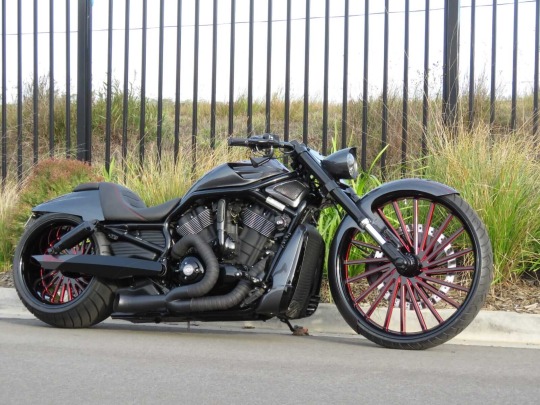
now what do you get when you cross the most reliable, unkillable dual sport of all time with a diesel engine? you get the Kawasaki KLR-650 HDT, the M1030-M1, a finicky monster used by the US military. perfect for the unkillable Miss Militia, a connoisseur of finicky military equipment. it can go anywhere and use anything for fuel, but it was literally designed to run on jet fuel.

Velocity’s a speedster right? so obviously he’s gonna get an ultra fast liter bike, super sport, 200hp, etc. WRONG. you fucking idiot. you fucking moron. personally i don’t subscribe to grimdumb f(c?)anon that he perceives real time when he’s speeding. that’s stupid cape design imo. he can go fast as his heart desires with his power. yknow what he can’t do with his power? rip up the fucking motorcross track, doing flips and jumps and shit. radical, man. so he gets a two-stoke ripper, the Yamaha YZ-250.

Battery, on the other hand, is a girlboss who needs to get stress relief via a supersport liter bike. she’s dealing with assault all day, can you blame her? so she’s getting the Honda CBR1000RR-Fireblade. liquid cooled, 999cc, inline four, with a top speed of 190mph it really doesn’t get much faster than this, folks.

now if you take the dual sport Kawasaki, give it the suspension of the Yamaha motorcross, but the tires and street performance of the supersport, you get the Supermotard class of bikes. the crackhead hooligans of the bike community, these are the bikes that are doing wheelies in residential areas, jumping over that grassy hill near your office building, and squealing around corners as the back end slips out. can you tell i have a favorite type of bike. now, who’s our resident crackhead of the protectorate? why, Assault, of course! So he’s getting the king of supermotos (and the bike i will probably be purchasing in may), a Suzuki DRZ-400SM

loud, annoying, and entitled Triumph gets the Harley Davidson Softtail, the bike of choice for obnoxious wannabe hell’s angels, the bike of choice for your balding 50yr old dad, or for the kid who wants so badly to be relevant and accepted amongst the boomers he calls friends. idk where Triumph fits into this its kinda just a vibe yk he’s a nepo baby, he gets a harley

and finally. the perfect bike for those with mobility issues/those concerned about safety due to preexisting medical conditions, Director Piggot gets a Harley Davidson Trike and she fucking slays on it, understand? girl power.
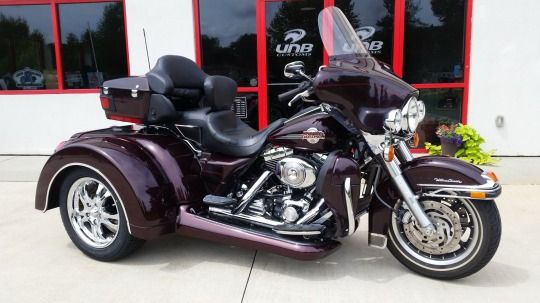
i forgot dauntless because he’s boring so he gets a boring adventure bike for boring losers. BMW F650GS. fuck you dauntless you dont even get a fun big BMW you get the heavy underpowered one. go to hell 🖕

#wormblr#parahumans#shitpost#kinda?#brockton bay#prt ene#motorcycle analysis#wildbow#worm web serial#colin armsmaster#miss militia#velocity#triumph#director piggot#emily piggot#assault and battery
64 notes
·
View notes
Text

BMW 700LS ad from France. The translated text reads..
"Above all, what you think: What a chance to have a BMW LS ...safe, reliable, loyal"
"Rain, beating wind, violent snow, ice... under these conditions, more than ever, you can count on your BMW LS! It has 100% road grip! And the unbeatable Boxer 4-stroke engine (unbeatable!) adds to the allure of this car. Elegant and comfortable, just as economical, this is the vehicle for loyal drivers, the BMW LS is the most reliable car for testing! A network of 200 dealerships at your service throughout the country."
"For a splendid free trial, go to: ETS. MOORKENS, S.A. Grande chaussée, 571, Berchem-Anvers Office in Brussels: rue de l’Abbaye, 20 Starting from 59,950 F"
9 notes
·
View notes
Photo
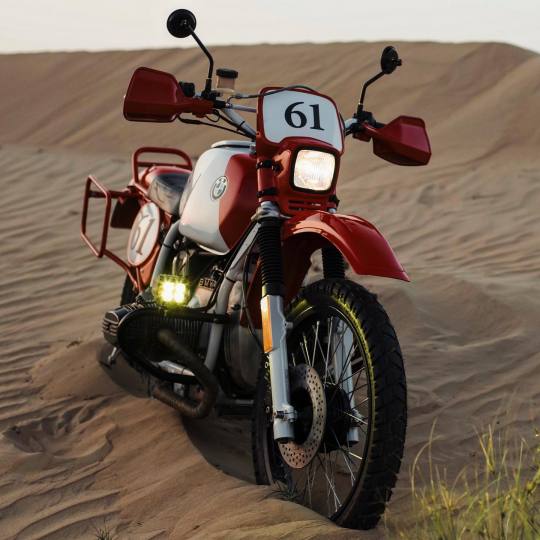
Dubai to London: 1985 BMW R80GS by @greasy_hands of @caferidercustom, built with one main purpose in mind: "Build a solid, reliable, good looking motorcycle that could be ridden from Dubai all the way to the UK without issue." Highlights include a rebuilt engine, custom subframe with integrated pannier rack, aluminum auxiliary fuel tank, Motogadget electronics, larger battery, upgraded regulator-rectifier, an enclosed phone holder / charger / USB port integrated into the fuel tank, and more. Photos: @sidpandey1. Full story today on BikeBound.com. ⚡️Link in Bio⚡️ https://instagr.am/p/CvM8jsSukAD/
112 notes
·
View notes
Text
I'm delighted that I got this new Matchbox Morgan Plus Four.

I adore Morgans; always have. While they are less than practical in most cases, they tick every other box for me. Let's explore what Morgans are and why I love them.

Morgan is a British company - which is still fully true to my knowledge, because in this ridiculous world we currently occupy, there are degrees to this sort of statement. MG was a British company, got acquired by a Chinese consortium and, with its cars built in China, is in no sense beyond the historical a British company; Land Rover still build its cars in the UK but it's owned by Tata of India. Are Land Rover still British? I'd say yes, but it's arguable. But Morgan is owned partly by the family of founder Henry Morgan (along with a private equity group, because you can't fucking escape the bullshit of 2025) and operate from Malvern in Worcestershire (pronounced "WOOstersheer"), as it has since 1909. This is crucial in understanding what Morgan is about; the company is a small-volume producer, because they still build all their cars by hand.


No robots, no mass-production. Every single one is bespoke, uniquely built to the customer's specifications, and as someone with an incessant urge to customise everything this is an extremely appealing attribute. It's hard to overstate how much I like the idea of a coachbuilt car made by craftspeople with decades of experience, but with modern technology and reliability. They have three models presently, the Plus Four, the Supersport and the Super 3 (recently made by Hot Wheels). Past models included the 4/4 with 4 seats, the +8 with a V8 and the Aero, which was an enclosed and streamlined model, along with a whole tine of 3-wheelers.

They are largely aluminium in construction, with a wooden subframe, which makes them very light. Of course, the look is iconic and dates back to around 1936, revised a little in 1950 and not much since, although it's often tweaked and given modernised tech. Morgan don't make their own engines, and the current range use BMW inline engines for the 4-wheelers (a 2-litre B48B20O1 turbo i4 making 255 hp for the Plus Four, and a 335hp B58B30C i6 with a twin-scroll turbo for the Supersport) and a Ford 3-cylinder for the 3-wheeler Super 3. Past models have used Ford, Mazda and Rover engines

They're all RWD, with auto or manual options that hit 60 in about 5 seconds in the Plus Four, and a sub 4-second 60 via auto only in the Supersport. What results is a sports car in the classic sense that Mazda was aiming for with the MX-5, not brutally powerful or transcendently fast but small, low, responsive, agile and focused on being fun to drive. They have only the space behind the seats for cargo, plus an optional rack on the back, and while third-party rigid hardtops exist there's no factory option, so they'd be pretty hard to live with as primary everyday cars, but as a car for enjoying driving, and as drivable art, I think there's probably none better.

Notably with this, it's basically exactly the same size as the 1:55 Siku +8, which is odd, as the little figures are supposed to be 1:75 scale but seem pretty well fitted to the car. The Super 3 is a bit larger scale, while the Majorette (the more battered green one, which has HW real riders but is very much not a HW model) is a touch longer. The inability of diecast makers to stick to a single scale drives me up the wall.
5 notes
·
View notes
Text
Why don't car manufacturers use polarized glass for their windscreens and their headlights? One 90° turned relative to the other. Wouldn't that avoid getting blinded by the headlights of cars coming from the opposite direction?
The idea of using polarized windshields and headlights to reduce glare is intriguing, but several technical, practical, and safety challenges make it unfeasible for widespread automotive use. Here's a breakdown of why this concept hasn't been adopted:
1. Polarization Mechanics & Limitations • Theory: If headlights emit vertically polarized light and windshields are horizontally polarized, the windshield would block glare from oncoming vehicles.
• Reality:
• Light Scattering: Headlights need to illuminate the road, which relies on light scattering. Polarized light scatters less effectively, reducing visibility of road surfaces, signs, and obstacles.
• Angular Sensitivity: Polarization effectiveness depends on alignment. On curved roads or hills, the 90° alignment between cars breaks down, causing glare to "leak" through.
2. Compromised Visibility for Drivers • Non-Polarized Light Sources: Traffic signals, brake lights, and streetlights emit unpolarized light. A polarized windshield would block critical light from these sources.
• Passenger Discomfort: Polarized windshields could distort or dim screens (e.g., GPS, infotainment) and heads-up displays (HUDs), which often rely on specific light orientations.
3. Technical Challenges • Durability: Polarized films degrade over time due to UV exposure, temperature swings, and physical wear, requiring frequent replacement.
• Manufacturing Complexity: Aligning polarization angles across millions of vehicles (and replacement parts) would demand precision incompatible with mass production.
• Cost: Polarizing all glass surfaces (windshields, headlights, mirrors) would significantly increase vehicle prices.
4. Safety and Regulatory Hurdles • Global Standards: Automotive regulations (e.g., FMVSS, ECE) require headlights to meet strict brightness and beam patterns. Polarization could reduce effective light output, violating these rules.
• Driver Adaptation: Tilting one’s head (e.g., to check mirrors) would alter the polarization angle, causing sudden glare or darkness.
5. Existing Alternatives Car manufacturers prioritize more practical solutions to reduce glare: • Automatic High-Beam Dimming: Uses cameras to detect oncoming traffic and adjust beams.
• Adaptive Driving Beams (ADB): Matrix LEDs or laser lights that "mask" oncoming cars while keeping other areas bright.
• Improved Optics: Better reflector designs and LED cutoff shields to minimize scatter.
• Anti-Glare Coatings: Hydrophobic or anti-reflective windshield coatings (e.g., BMW’s "Glareshield").
Historical Context • 1950s Experiments: Chrysler briefly tested polarized headlights and windshields in the 1950s but abandoned the concept due to the issues above.
• Sunglasses vs. Windshields: While polarized sunglasses work for individuals, scaling this to vehicles requires universal adoption—a near-impossible coordination challenge.
Conclusion While polarized glass could theoretically reduce glare, its trade-offs in safety, cost, and practicality make it inferior to modern adaptive lighting and optical innovations. Automotive engineers continue to focus on smart, dynamic systems (e.g., ADB, LiDAR-guided beams) that balance glare reduction with reliable visibility. Until polarization technology evolves to address these flaws, it’s unlikely to appear in production vehicles.

#led lights#car lights#led car light#youtube#led auto light#led headlights#led light#ledlighting#led headlight bulbs#young artist#polarized glass#car culture#race cars#classic cars#car#suv#supercar#chevrolet#coupe#cars#self care#car light#headlight bulb#headlamp#headlight#lighting#lights#car lamp#lamp
3 notes
·
View notes
Text
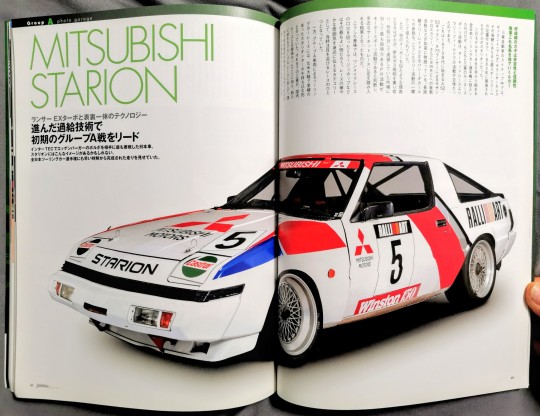

MITSUBISHI STARION
Technology that is inextricably linked to the Lancer EX Turbo
Leading early Group A races with advanced supercharging technology
The Japanese car that fought best against Eggenberger's Volvo at the Inter TEC. Starion may have such an image. In the All Japan Touring Car Championship, he showed a perfect run from an early stage.
Stability and reliability are the keys to good results A-car that makes it to the ground safely
In the lineup of Mitsubishi Motors, the model developed in 1982 was the Starion, positioned as a high-end sports coupe that was the successor to the Galant (Lambda) and Lancer Celeste.
This model was introduced in the All Japan Touring Car Championship that began in 1985, but Mitsubishi's motorsports activities were originally focused on rally fields rather than circuit races.
This is clearly evidenced by the A53/55 Galant, the Southern Cross Rally with the AR73 Lancer, and even participation in the WRC, which began in the 1970s. Participation in the long-distance rally raid from Paris to Dakar was also seen as part of these rally activities.
However, for other manufacturers, for similar reasons, the most convincing PR activity for a market that was hungry for performance while surviving emissions regulations was motorsport. It was a result of making a decision and stepping into the circuit race at hand.
In this sense, the Mirage Cup, which started the one-make race, is probably the best example. As a category that conveys the glamorous atmosphere of racing, it was one of the races that attracted attention at the time.
On the other hand, in the touring car race of Group A vehicles, the Starion Turbo, which had a proven track record in the North American continent, was brought in. One of the reasons for this was that until then, Mitsubishi had had little to do with domestic races, and that they could not find a suitable car to participate in the newly-started Group A race.
This is also the case with Nissan's Group C cars, which used the proven mechanics of the IMSA series in the form of "reverse imports."
Well, that Stallion is equipped with a G63B type 3-valve SOHC + turbocharger engine. Mitsubishi had accumulated turbocharging technology with the Lancer EX2000 for WRC. The engine type of the Lancer EX2000 Turbo is the 4G63 type (different from the 4G63 type of 4-valve DOHC used in the Lancer Evolution series later. It is the SOHC 2-valve engine that became the prototype of this), and the basic part is Stallion's
Common with the G63B type. Looking back on these circumstances, Mitsubishi had a certain amount of experience and confidence in the basic mechanisms and content that make up the vehicle.
The first Stallion that appeared in such a background was InterTEC in 1985. After that, Akihiko Nakatani, who became the main driver of the Stallion, was combined with M. Liu and Fumio Mutoh to finish 4th overall. Considering that the 1st and 2nd place was the Volvo 240 Turbo and the 3rd place was the BMW 635CS, it was a good result, what happened to the other Japanese cars?
Then, from 1986, Kunimitsu Takahashi and Akihiko Nakatani teamed up to participate in the All Japan Touring Car Championship series on a regular basis. He finished 5th in Round 1 and 3rd in Round 2, and in Round 3 at Tsukuba, he finally won his long-awaited first victory.
At this time, the opponent was Takao Wada/Aguri Suzuki's Skyline RS Turbo, and although they conceded the series championship, they were always on even terms and won the 2nd place in the series. He had become a presence respected by other entrants.
The following year, 1987, they maintained their first-class competitiveness and got off to a great start with two consecutive wins at the opening of West Japan and West Sendai. After that, he continued to lose races due to trouble, but he managed to win the series ranking 3rd place thanks to his savings in the early stages. He has proven that he is still a first class contender.
In 1988, the Skyline fleet changed to the HR31 type, the Sierra RS500 increased, and the Supra entered the war. The SOHC system engine was already severe, and the chassis performance had reached the stage of review.
In terms of results, the 2nd place in the match against Nishi-Sendai was conspicuous, and the number of cases where other division 1 cars fell behind was increasing.
On the other hand, the wide-body GSR-VR (1987) was launched on the market during this period, and the basic performance was slightly improved, but compared to the trend of rival cars, the progress of evolution was not good. He took small strides and eventually withdrew from Group A racing in 1988.
After that, Mitsubishi's motorsports activities shifted to Group A rally cars with turbo 4WD starting with the Galant VR-4, and after the release of the Lancer Evolution series, it became a WRC top contender until it captured the world title.
Even so, in 1986, when the race began in earnest, the Stallion, whose basic design was already outdated, was able to achieve such a good track record. It's nothing but Taka.
At the 1986 Inter TEC, which was the debut race, it was exciting to see the Stallion running fast and make the Volvo team say, "What is that car?"
62 notes
·
View notes
Text
THE CAR TRANSPORTERS GUIDE: COOL INTERIOR DESIGN
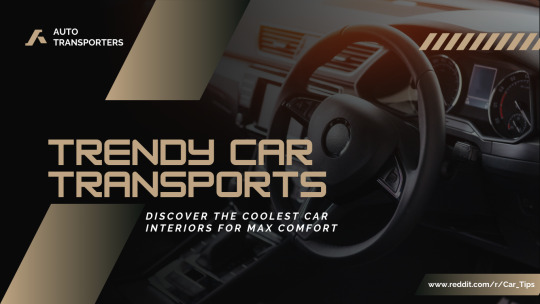
CAR DESIGN FEATURES FOR MAX COMFORT
Cars now come with interiors that put comfort first. The San Jose auto shipping offers an easy way to safely and securely transport cars over long distances without risking damage. These thoughtful features turn a basic car transport into a more pleasant journey.
New design features make driving and riding more enjoyable. Adjustable seats with built-in memory help you find the perfect position every time. Many cars have large touchscreens that control music, climate, and navigation easily. Soft-touch materials and better armrests boost comfort for longer drives. Climate zones inside are more precise, so everyone stays cozy.
Some models even include built-in massage seats to relax your muscles. Improved lighting options create a calm mood inside the car. Noise reduction technology keeps the engine and road sounds outside for a quieter ride. These design updates aim to make every trip smoother and more comfortable.
Cars With Cool Features
Modern luxury vehicles have reached new heights of interior excellence. The 2025 BMW X1 and Honda Odyssey earned perfect 9.0/10 interior scores that set new standards for comfort and sophistication in different vehicle segments.
Our shipping company in New Jersey recognizes these remarkable interiors need special attention during transport. The Mercedes-Benz S-Class boasts a stunning 12.8-inch OLED touchscreen, and the Audi Q7 comes equipped with a 17-speaker Bang & Olufsen sound system that requires careful handling. Luxury car interiors now include advanced features like air purification systems, aromatherapy, and UV cabin sanitation to improve the driving experience.
This complete guide explores the best new car interior designs of 2025 and shows you how to protect these luxurious vehicles during transport. We'll cover everything from massage-equipped seats to eco-friendly materials to give you the knowledge about modern car comfort and adaptable shipping solutions.
Drive and Comfort: Latest Car Models With Cool Interior Design
Shipping luxury vehicles with beautiful interiors needs special knowledge and care. Many car enthusiasts now prefer open air car shipping to move their prized cars with modern interior designs. Industry data shows that about 97% of all car shipments use open-air transport methods. This makes it the most common way to transport vehicles across the country.
Cars with advanced interior designs need extra careful shipping. The 2025 digital world brings us interiors that mix comfort, technology, and sustainability in new ways. Modern car seats now adjust on their own based on the driver's posture and body type. These tailored features need careful handling during transport.
OPEN AIR CAR TRANSPORT: THE POPULAR CHOICE
Using a fully insured car shipping options on an open-air trailers where cars are firmly secured to stop movement during transit. This method gives several benefits to owners of vehicles with premium interiors:
Budget-friendly options: Moving multiple vehicles at once helps reduce shipping costs
Easy to find: More than 90% of customers choose open auto transport, which makes finding carriers quick and simple
Detailed insurance: Most reliable companies provide full insurance coverage during transport
Weather exposure happens during open-air shipping, but professional carriers use protective measures to guard luxury interiors from damage. Many services use special nylon ties that only touch the rubber tires and avoid pressure on the vehicle's body.
Modern Interior Features Worth Protecting
The 2025 car models showcase interiors that blend luxury and technology in amazing ways. Large customizable displays have replaced old-style gages. These screens show everything from speed readings to entertainment controls. Smart AI assistants control various car functions and work naturally with smart home devices.
Temperature control in new vehicles goes beyond simple climate settings. Each seat can have its own temperature in four-zone climate systems. Built-in air purifiers spot and remove allergens and pollutants. Some vehicles even use solar panels to keep interiors cool when parked in direct sunlight.
Materials and Customization
Car interior materials have changed in most important ways. Beyond traditional leather, car makers now use vegan leather, recycled fabrics, and eco-friendly materials without losing comfort. Microfiber works great for car seats and interior trim because it lasts long and needs little maintenance. Synthetic leather gives that luxury look without the upkeep real leather needs.
PREPARATION FOR SAFE SHIPPING
Your vehicle with premium interiors should arrive in perfect condition. Here's what owners should do before shipping:
Clean the car really well to spot any existing damage during inspection
Take detailed photos from all angles to document the car's condition
Take out personal items since shipping insurance won't cover them
Look for fluid leaks and fix them before transport
Turn off alarms and remove toll tags to avoid accidental triggers
Insurance and Protection
Insurance coverage matters a lot when shipping vehicles with luxury interiors. Good companies are licensed, bonded, and insured. They offer complete protection throughout shipping. Some special carriers provide up to $2 million in cargo insurance to protect high-value vehicles.
You need to think over open versus enclosed transport based on your car type, budget, and protection needs. Open transport might expose vehicles to weather, but damage risks are low. Car makers ship new vehicles using open-air transport, which proves it's safe and reliable.
Check the shipping company's insurance coverage, luxury vehicle experience, and delivery success before choosing them. Companies that let you track your car 24/7 give extra peace of mind. You can watch your vehicle's progress from pickup to delivery.
Understanding modern car interiors and open-air shipping details helps you make smart choices about moving your vehicle safely and securely.
youtube
6 notes
·
View notes
Text
Following testing you can't conclude anything to be truly fair as sandbagging remains a huge thing + different running programmes are a thing.
For example Jota was quick off the first session while most others seemed to be focussed on longer stints.
Truly looking at the fastest lap times Toyota seems to be on par with BMW which is absolutely not true. Their long run pace as always is incredibly consistent and they have so much experience that they have about everything including reliability on their side.
The only thing that wouldn't surprise me is if they don't finish on pole position. They have quite a heavy car with this BOP, the heaviest it's ever been and that could limit them slightly. But on race pace they definitely are close to being the quickest.
Porsche cars topped all sessions and they could be quite quick this weekend and seem to be quite consistent + their reliability seems to be quite good. They probably won't be exactly on pace with Toyota but I think they could theoretically fight with them.
Same goes for Ferrari they weren't quickest during testing but they've shown they're capable of coming close to Toyota.
Cadillac I'm not sure they seem quite quick but last year they struggled quite a bit, won't be sure until the race on them I'm guessing.
Peugeot despite the seemingly favourable BOP doesn't seem very quick. Don't think the win is in the cards for them - really hope the Evo is an improvement for them next round.
Newcomers Lambo and Alpine don't seem to be very quick yet, though aren't very off the pace. Alpine had an engine issue in Session 3 and despite the obvious memes with the mechachrome I really wonder if we're going to see more of that this year. And I'm afraid we will.
BMW had quite an unfavourable BOP but seems to be quick so far despite that. They were the quickest of the newcomers during testing. It will be interesting to see how they improve over the weekend.
Realistically none of the newcomers will be fighting for a podium. But I do think that Lambo, Alpine and especially BMW show promising potential. And maybe if aided by BOP and some more experiences could be fighting a little higher up.
Isotta is as expected, slow. They do have an unfavourable BOP but between the car and the driver line up I don't think you can expect much from them.
If I'd have to take a bet I'd probably still put my money on Toyota but I guess we'll know more come the race. Endurance racing can always surprise and it is a rather long race, so a lot can happen.
7 notes
·
View notes
Text
ASM Performance Cars is a UK-based company specializing in high-performance and modified vehicles. Their offerings include a wide selection of performance cars such as BMW, Audi, and Subaru, which cater to enthusiasts looking for exceptional driving experiences. The company provides various modifications, from tuning and engine upgrades to custom exhaust systems, ensuring that each vehicle can deliver top-tier performance on the road.
ASM is not just about selling performance cars; they also offer advice and FAQs to guide owners and buyers through essential topics such as car maintenance, tuning, and how to improve car reliability. They emphasize the importance of regular servicing, maintaining high-quality components, and utilizing premium fuel for optimal performance. For those interested in enhancing their vehicle’s capabilities, ASM provides insights into engine tuning, brake and suspension upgrades, and other performance mods.
For more information, you can visit their website at asmperformancecars.co.uk to explore their inventory or get tips on performance upgrades.
3 notes
·
View notes
Text
the idea of owning an old car is so romantic and joyous, but the reality is honestly just painful.
a good compromise in my opinion is to take a nicely kept old chassis and swap a modern engine and drivetrain into it to give it a bit of reliability and also a bit more performance.
a dream for me would be to buy a Mercedes W124 Wagon in decent condition, but not perfect condition, and swap out the questionable 90s engine and transmission in favour of a modern Lexus V8 and the 10-speed auto that comes with it. despite being double the displacement, it would likely have better fuel efficiency and make triple the power.
another dream would be to get an old kei hatchback, something like a suzuki Alto, and put a modern 3-cylinder 1.5L hybrid engine from a toyota yaris into it. it only makes 90hp, but compared to the stock 40hp, thats pretty good, especially in a car that would weigh about 700kg including a battery. it would also be insanely fuel efficient being half a ton lighter than a yaris hybrid. the only issue would be crash safety, which can be aided with the addition of a roll cage and some modern seats.
one ive had in my mind for ages is to take a very basic E30 BMW and replace the engine with a K20C1 engine from a civic type R. sure you could go n/a with a K24 and get it to rev its ass off to make a similar power figure, but with the turbo 2L, you have all the power and torque you could ever need and with a BMW 6 speed behind it, one of the best gearboxes money could buy. pair it all with a well setup LSD, some adjustable dampers and a good set of brakes and you have a street car that would never boring. if only they sold the wagon in australia.
2 notes
·
View notes
Text
1966 1600-2 Coupe by Baur
In September of 1966, Stuttgart-based coachbuilder, Baur, with its rich history of collaboration with BMW, proposed a small series of coupes based on the BMW 1600-02. The 1600-02, part of BMW’s acclaimed “Neue Klasse” series, was a compact sedan known for its sporty handling and reliability. Baur aimed to elevate this model by crafting a two-door coupe, blending the 1600-02’s practical performance with a more elegant, dynamic design. The car retained BMW’s iconic kidney grille, but the most notable design change was the sharply angled rear window section, giving the coupe a sleeker, more distinctive profile compared to the standard sedan’s upright rear design.

Mechanically, the 1600-02 Coupe was set to retain the factory model’s specifications, including its 1.6-liter four-cylinder engine that produced around 85 horsepower. This kept performance on par with the sedan, as the focus was on aesthetics rather than power upgrades. The coupe’s two-door configuration and refined styling targeted enthusiasts who wanted a more distinctive vehicle without sacrificing the 1600-02’s core strengths, potentially carving out a niche in the competitive 1960s market.

Despite the promising concept, BMW did not greenlight the 1600-02 Coupe for production. The decision likely stemmed from BMW’s focus on the upcoming 2002 series, which debuted in 1968 and became a defining model for the brand. With resources likely stretched thin and the 2002 poised to fill a similar sporty-compact niche, the coupe may have been deemed redundant. Baur’s expertise, honed through decades of crafting bespoke BMW models, couldn’t sway the decision, and the project was shelved.

The 1600-02 Coupe by Baur remains a captivating “what-if” in automotive history. It represents the experimental spirit of the 1960s, a time when BMW and its partners explored bold ideas to captivate driving enthusiasts. Though it never reached production, the coupe’s story underscores the creativity that has long driven BMW’s legacy, leaving enthusiasts to wonder about the sleek two-door that could have been.

4 notes
·
View notes